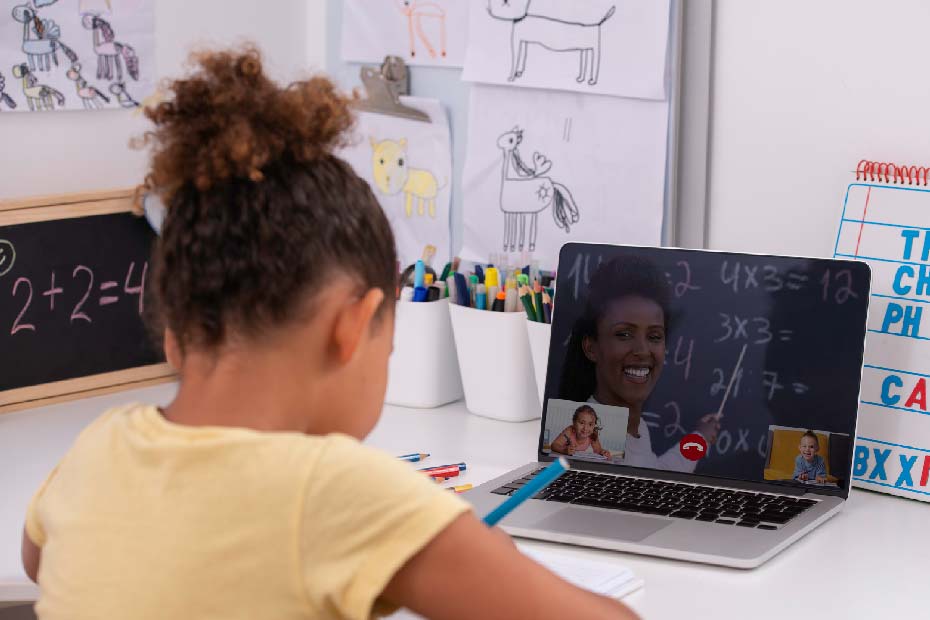Published September 23, 2020 • 4 Min Read
Back to school season may trigger a wave of spending if you need to pick up supplies, clothes or a new laptop for your kids. Choosing to homeschool — whether it’s out of preference or necessity — might help you save a little money on educational expenses. But there are some important financial considerations to keep in mind if staying home means becoming a one-income family.
Revisit your budget
If you’re moving from two incomes to one so you (or your partner/spouse) can stay home to help educate your children, it’s important to assess just how much of an impact that may have on your budget.
Whether you already have a monthly budget in place or you need to create a budget, figure out:
-
How much income each adult in your household generates monthly.
-
How much of that income will go away with one of you staying home.
-
Where you may have new opportunities to save money if staying home allows you to reduce expenses.
This can give you a guideline for how much you may need to reduce your spending by to make sure that your new income is sufficient to meet your basic living expenses going forward. For example, if you’re reducing your combined income by 30% staying home then you might need to cut 30 per cent of your spending until you figure out what your new financial normal is going to look like.
Consider what new expenses you may have
Deciding to stay home could save you money in more ways than one. For example, you may be able to add money back into your budget if you’re cutting out:
-
Commuting expenses
-
Lunches out with coworkers
-
Professional attire
-
Parking and tolls
-
Before school or afterschool childcare
-
Professional memberships
That’s helpful for downsizing your budget, but there may be trade-offs to make financially if you’re taking on new expenses. For instance, one of the biggest ones may be healthcare if you’ll be losing employer-provided health insurance or you need services that aren’t covered either fully or partially by a provincial health plan. The Ontario Health Plan, for instance, doesn’t cover certain prescription drugs, dental care and eyeglasses.
Even if you don’t have a larger expense like purchasing health insurance, you may see increases elsewhere. For example, you might see your utility bills or food budget increase slightly if you’re spending more time at home as a family. The more you can balance savings in some areas against potentially higher spending in others, the easier it becomes to keep your budget on track.
Review your tax situation
Moving from two incomes to one can affect your tax liability, and it’s important to understand what that may mean when filing taxes.
First, consider how a change in income might shift your tax bracket. If your family income goes down significantly, this could put you in a lower bracket than you are now, potentially reducing what you owe at tax time.
Next, consider what the loss of certain tax breaks may mean for your filing. For example, you could miss out on the benefits of claiming a credit for child care expenses if you’re no longer paying them. And aside from federal tax rules, remember to check provincial tax guidelines as well to see how your ability to claim certain credits or deductions might be affected.
Make room for saving and investing in your financial plan
Transitioning to one income to stay home with your kids can make saving and investing a little more challenging. But it’s important to continue prioritizing things like saving for emergencies, paying down debt, investing for retirement and planning for your child’s future college expenses as much as possible.
Some of ways you can do this include:
-
Automating deposits into an online savings account.
-
Opening one or more Guaranteed Investment Certificates (GICs) to earn steady returns.
-
Adding money to a Tax-Free Savings Account (TFSA) and having the working parent contribute to a Retirement Savings Plan (RRSP).
-
Saving in an Education Savings Plan (RESP).
When your income goes down because you’re staying home, that may curb the amount you can save each month. But the most important thing to remember is to be consistent in making those contributions so they can grow over time through the power of compounding interest.
If you’ve chosen to be a stay at home parent or you’ve recently made the transition, we are here to help. Reach out to your RBC Advisor today to learn more about shaping your financial plan to fit your family’s needs.
This article is intended as general information only and is not to be relied upon as constituting legal, financial or other professional advice. A professional advisor should be consulted regarding your specific situation. Information presented is believed to be factual and up-to-date but we do not guarantee its accuracy and it should not be regarded as a complete analysis of the subjects discussed. All expressions of opinion reflect the judgment of the authors as of the date of publication and are subject to change. No endorsement of any third parties or their advice, opinions, information, products or services is expressly given or implied by Royal Bank of Canada or any of its affiliates.
Share This Article






